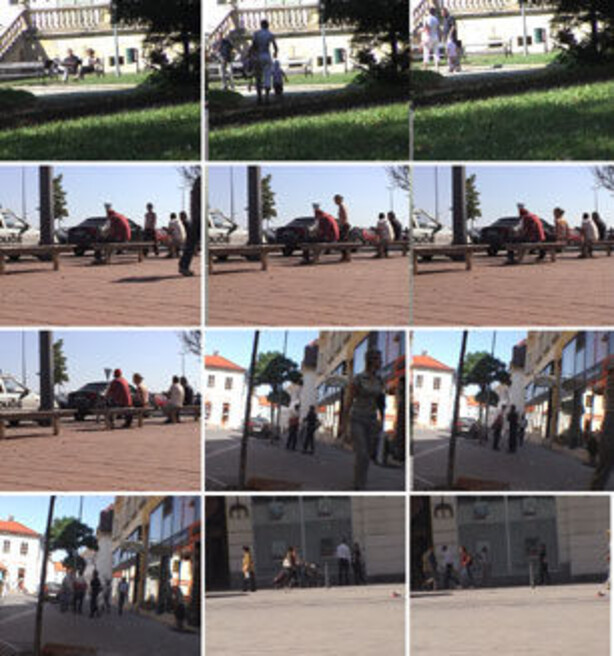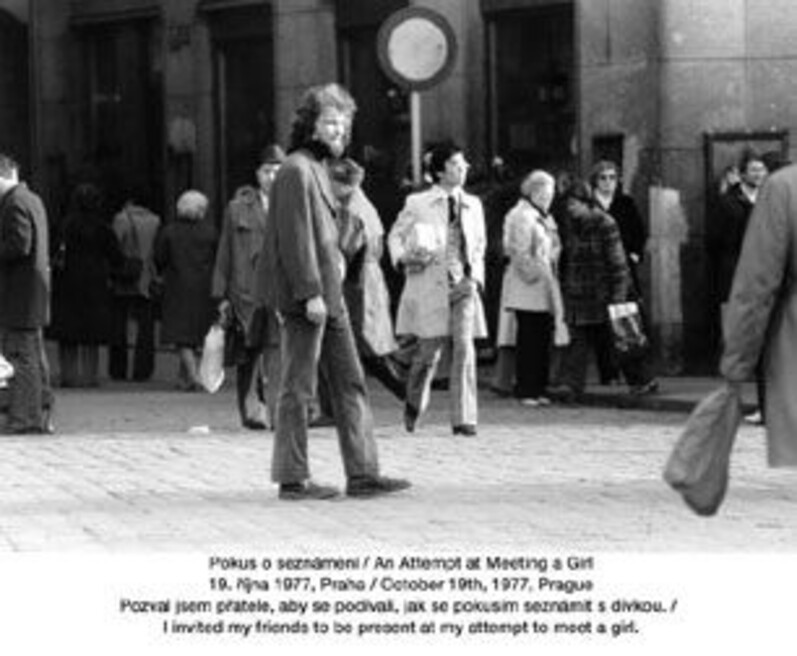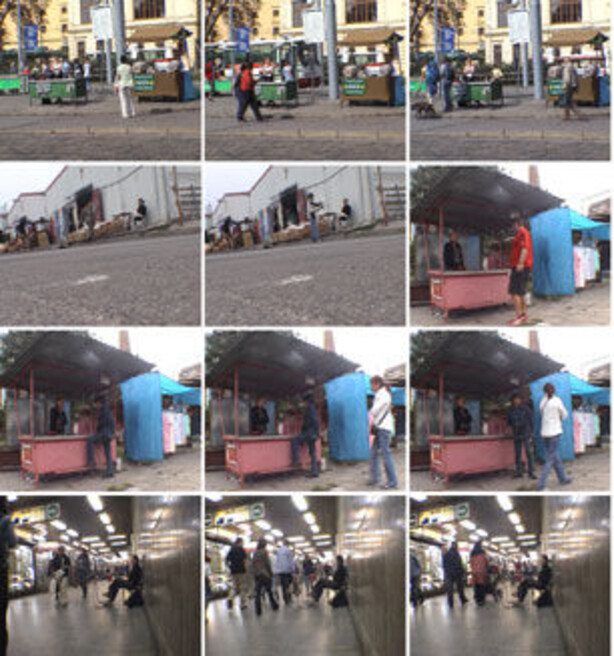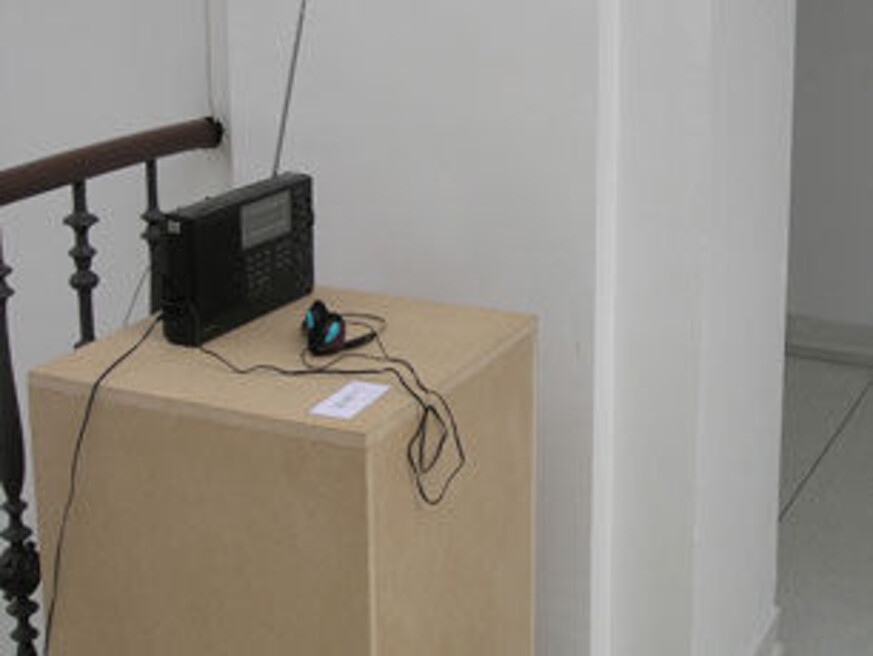Barbora Klimova
Bereich: Bildende Kunst
Key Facts
Nationalität
TschechienBereich
Bildende KunstWohnort
BrnoEmpfehlende Institution
Erste Bank/tranzitZeitraum
März 2007 - April 2007Barbora Klímová MgA.
•Born
18.9.1977, Brno, Czech Republic.
• Studies
2004-2006 HISK Hoger Instituut voor Schone Kunsten - Vlaanderen.
1997-2004 Faculty of Fine Arts, University of Technology Brno,
Intermedia studio.
2003 Koninklijke Akademie van Beeldende Kunsten, Den
Haag.
2002 Hungarian University of Craft and Design, Budapest.
2001 Winchester School of Art, University of Southampton.
• Awards
2006 J. Chalupecky award, J. Chalupecky society charter
2005 The Development grant of Tranzit.
2005 The Scholarship, Egon Shiele Art Centre, Český Krumlov.
2003 The Scholarship, Centre for Contemporary Art, Prague.
• Solo Exhibitions (selection)
2005 SLIders, Moravian Gallery, Brno. (cat.)
Intervention into the system of public lighting Brno.
2002 The Gallery in the Red Bull House, Brno.
2001 New Harmony, Eskort Gallery, Brno.
2000 Pictures, Alice Cihalova Gallery, Trebic.
1999 Cech & Nemec Gallery, Brno.
(cat.)
• Group Exhibitions (selection)
2006 Barrack, HISK, Antwerpen.
F.CK THE GUILT, Bastart gallery, Bratislava.
First things first, CCNOA Brussels.
Exhibition of the Jindřich Chalupecký Award, The Brno Haus of Arts. (cat.)
LeereXVision Connectios, MARTa Herford. (cat.)
2005 Fifth biennial of young artists, City Gallery Prague. (cat.)
2005 Next time in your flat, Jesper Alvaer and Barbora Klimova, The Haus of Arts,
Budweis.
2004 Karaoke …., Vysocina Gallery, Jihlava. (cat.)
2004 Anxiety of influence: Bachelors, Brides and Family Romance, Stadtgalerie, Bern. (cat.)
2003 Prague Bienale, Veletržní Palác, National Gallery, Prague. (cat.)
2003 J.Simanova, B.Klimova, Photo Gallery, Liberec.
In Other Circumstances It Could Be Truth, House of the Lords of Kunstat,
Brno.
2002 Hedonistic abstraction, Moravian Gallery, Brno. (cat.)
2000 Nice exhibition, Municipal Theatre.
Supra, Vypad Gallery, Olomouc.
E322, Oravský Podzámok, Slovakia.
1999 Pandora Box, The Brno Haus of Arts.
1998 The Villa of Mitrovsky, Brno.
• Publications
Serranova, Mariana: Mythologies of Public Space. Jindrich Chalupecky Award, Final 2006. J. Chalupecky society charter. 2006
Kalinová Jana: SLIders. Umělec Magazine. 3/2005.
Ingerle, Petr: SLIders(Cat.). Moravian gallery, Brno. 2005.
Budak Adam: Anxiety of influence: Bachelors, Brides and Family Romance (Cat.). Stadtgalerie, Bern 2004.
Ptacek, Jiri: Karaoke (Cat.). Vysocina Gallery, Jihlava 2004.
Ptacek, Jiri: Prager Biennale(Cat.). 2003.
Valoch, Jiri: Reflexion of minimal art in the work of Barbora Klimová. Prostor Zlin. 2/2004.
Valoch, Jiri: Jaka je mlada abstrakce dnes? Atelier. 9/2002.
Ingerle, Petr: Hedonistic abstraction (Cat.). Moravian gallery, Brno. 2002.
Valoch, Jiri: Brno City´s Youngest Art Scene. Atelier.16-17/2000.
Lindaurová, Lenka: Umělec Magazine. 1/2001.
Planned project
I would like to take advantage of my stay at Museumsquartier in Vienna to develop a project, which is linked to my previous work.
It is a kind of reseach into the essential characteristics of contemporary urban space. Currently I am primarily dealing with public spaces. I am engaged in the questions of urbanism, architecture, but also the cultural history and politics of a space.
I am interested in how a place can influence individuals and society (conventions, specific reactions connecting certain locations, and also the connection between an environment and the mentality of its inhabitants.)
In my last project I reactivated performances from five Czech performance artists, realized in public spaces during 70/80s.
Through their present (re)perfomance I try to investigate the tranformation of a public space in Czech Republic in past decades.
I repeat each particular action in different locations, and simultaneously document the public response to those actions in each location. For that I use a video-recording from a hidden camera. As a part of this project I also present recorded conversations with the original performers about their experiences in the environment in the70/80s.
I will also use the medium of body intervention or performance in my future work, although the question of a medium depends on the particular work.
The project I would like to realize during the stay at the Museumsquartier in Vienna will be based on my personal experience in situ. I would like to employ my subjective situation as a stranger, a person who isn´t burdened with the history of the place and in addition has only basic knowledge of the local language. I will undertake informal investigations (performative or material interventions) to explore some of the phenomenological characteristics of the contemporary public space of Vienna.
The documentation will be processed in form of audio/video/photo, texts/publication outcome.
I will try to involve the random passer-by/the broader unartistic public. I am also interested in cooperating with architects, urbanists, designers, sociologists or other specialists. I will try to seach for a specific places not only for investigation but also for the presentation of my project.
As no less important I consider the possibility to familiarize myself with the local art scene and discussion with other artists and theoreticians.
Barbora Klímová
Project :
The development of a research project in the area of family housing in formal Czechoslovakia during the years 1968-1989, and development of the project Replaced 2006.
Thanks to theTranzit organization, supported by Erste Bank, I was granted a studio and a stipend within the framework of the Artist-in-Residency program at the MQW, from March through April 2007.
I took advantage of my sojourn primarily to research and develop the exhibition project entitled Famous Brno Villas II, subsequently presented at the G99Gallery Brno from June 6th through July 29th, 2007. [1]
Concurrently, I have been preparing a catalogue for the project Replaced 2006.[2]
[1] The exhibition entitled Famous Brno Villas II presents part of an ongoing personal research project in the area of family housing during the years 1968-1989. The project aims to reflect not merely the villas themselves from the viewpoint of their architectural form but questions them as a cultural-political phenomenon as well.
At the same time it is an allusion to an exhibition that took place in mid- 2006 at the Brno House of Arts (Jan Sedlák and Co., Famous Brno Villas, 17 May – 6 August 2006).
It was apparent that villas from the last third of the 20th century were absent from the exhibition; for the most part from the period of normalization, the time of my childhood. I consider the characteristic attributes of the period architecture, urbanism, and environment in general to be a crucial aspect of the common identity of several generations. Perhaps this is the reason I perceived this gap as a challenge.
I tried to recall a “normalization” era villa. I don’t think I’ve actually ever been inside one before. I imagined a house with the characteristic attributes of the architecture of that time, but primarily it was a house in a garden hidden behind pine trees. My interest probably originated in the inaccessibility, the tinge of decadence, and ideological suspicion related to such villas that I had felt as a child perceiving reality from the perspective of the majority culture.
In the beginning there was more an idea of a period villa that I wanted to somehow fulfil than one building in particular. I contacted experts, but first of all I wandered around Brno looking for this particular house.
I relied on my intuition. When I succeeded in identifying a house I asked the owner for an interview. I did not intend to assess the quality of individual buildings. I only present those houses which I succeeded in finding and of which the owners or architects were willing to share their history.
More than in an examination, I was interested in mapping the complicated structure of relationships, causes and effects. This is the reason for presenting interviews with house owners or architects along with visual material and general information. It is clear, that it is impossible to assess many of the houses merely from the perspective of its form or the materials used.
As it is reminiscent of the afore-mentioned exhibition, I maintained the original visual form that its installation took. There is also the mimicking of a certain exhibition pattern as an attempt to verify this presentation context.
[2] For my Replaced-Brno-2006 project I chose five performances by five artists that took place in Czechoslovakia in the 1970s and 80s. The main selection’s prerequisite was that the performances were conducted (or could have been conducted) in a public space. Instead of composed, clearly identifiable performances, gestures or acts that bordered on normal behavior suited my plan.
I was interested in what way a public space and everything related to it (politics, urbanism, architecture, as well as social conventions and rules related to certain places) was transformed.
I met with almost all the artists of the original performances and spoke with them of their experiences and why they carried out such performances. It became evident that, besides a probe into public space, my project would reflect and alter the way we now view their performances.
Simply put, it was meant to show what happens when we transfer a previously documented gesture to a completely transformed reality.
The catalogue comprises conversations with authors of performances, which took place in Czechoslovakia during the 1970s and 80s, and which were conducted in public space.
I questioned the authors about their experience with public space in the 1970s and 80s, and with contemporary space as well.
The catalogue will be accompanied by a DVD with documentation of my own reconstructions of their performances in contemporary public space. The reconstructions took place in Brno in 2006.
I also created sketches for several performances during my stay in Vienna.
Thanks to the residency I could concetrate fully on my work. At the same time I explored the contemporary cultural scene in Vienna. I met with many artists, among others those who were in the residency program at the MQ as well.
I visited many galleries and institutions. I consider the possibility to visit the libraries (at Akademie der bildenden Künste Wien and Universität für angewandte Kunst Wien.) equally important.
I focused mainly on the study of art theory dealing with site specific issues, and publications which are difficult to access in the Czech Republic.
The residency was inspiring and enriched my work.
I would like to express my gratitude to the institututions that have supported me and have enabled me to live and work at the MQ in Vienna.



